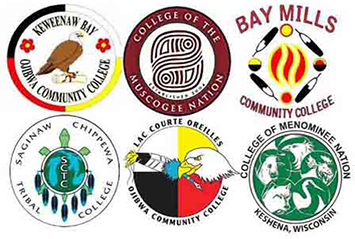The War of 1812 created a lasting impact on several tribes whose communities were involved. For Native Americans, the War of 1812 created Indian heroes, established historic places, and dispossessed ancient home areas.
Since the 1960s and especially after the Tribal College Act of 1981, nearly 40 tribal colleges have been operating in the United States.

In the oral tradition, Indians have since told stories about the brave heroes and such places where battles and treaties of the War of 1812 occurred. The war forged alliances, called for leadership, and tore native communities apart. In the turmoil, the Shawnee leader Tecumseh rose to prominence as well as his brother, the Shawnee Prophet, including Red Jacket of the Senecas and Pushmataha of the Choctaws.
But in addition to forging alliances and establishing folklore, the defeat of the Creek, Shawnee, Ojibwe, Potawatomi, and other native nations, allowed U.S. officials to negotiate a series of treaties with tribes, causing the ceding of lands to the United States. An incredible number of more than 200 treaties were forced on tribes, establishing nearly a hundred reservations located west of the Mississippi River. These land loss agreements have become a part of tribal histories. Importantly, tribal communities acutely understand the daily relevance of their political sovereignty and their trust relations with the federal government.
Since the 1960s and especially after the Tribal College Act of 1981, nearly forty tribal colleges have been operating in the United States. For example, there are three colleges in Michigan: Bay Mills Community College, Keweenaw Bay Ojibwa Community College, and Saginaw Chippewa Tribal College; two in Wisconsin: College of the Menominee Nation and Lac Courte Oreilles Ojibwa Community College; and one in Oklahoma: College of the Muscogee Nation, that offer courses on American Indian history and studies. In addition, Haskell Indian Nations University in Kansas offers history courses. In these courses, the tribal colleges in these states were tribal communities in the War of 1812. Native instructors teach these history/studies courses and the Indian heroes listed above are revered. In native people’s eyes, these Indian leaders were patriots, defending their homelands and communities.
In tribal communities today, the Shawnee Tribe located in Miami, Oklahoma proudly displays a photograph of Tecumseh on their website. The Absentee Shawnee Tribe at Tecumseh, Oklahoma display an image of Tecumseh and the Shawnee Prophet with the theme “Honoring our Past Building our Future” on their website. The Eastern Shawnee Tribe of Oklahoma show a permanent foreground image of Tecumseh on their website. The Seneca Nation of Indians at Cattaraugus, New York honor Red Jacket in their section of Historic Seneca Leaders on their tribal website. The Seneca-Cayuga Tribe of Oklahoma in the town of Grove provide a history section on their website about treaties. At Ocmulgee, the Muscogee Nation of Oklahoma website has a full history section about treaties, especially the Treaty of 1814 resulting from the Red Stick War. The Poarch Band of Creek Indians at Atmore, Alabama present a website citing the same treaty and Horseshoe Bend Battle. From defeat and removals, comes strength. Native peoples have digitized their legendary war leaders to preserve positive memories for future generations to realize the resilience of their peoples.
Last updated: August 14, 2017
